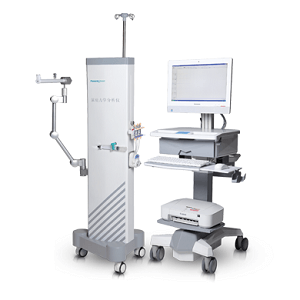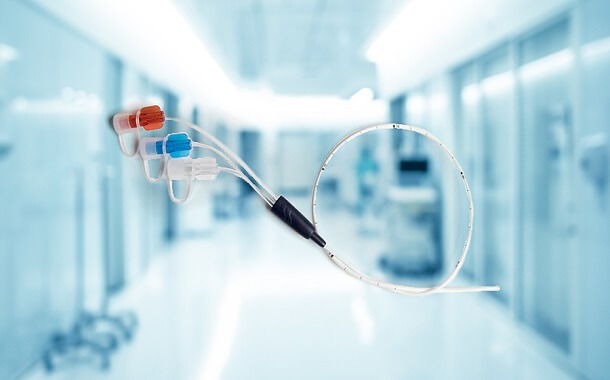How Much Does a Urodynamic Test Cost?
The urodynamic testing, known also as UDS, can be defined as a suite of complex tests designed to evaluate the functioning of the lower urinary tract both in normal health conditions and when the patient complains of various symptoms.
The main purpose of these tests is to objectify some symptoms which, by their nature, are subjective: sensations of bladder fullness or urination, pain or stinging, and any other sensation perceived by the patient. Other possible indications for urodynamic exploration include monitoring treatments or routine evaluation in patients with neurological bladder.
How Much Does a Urodynamic Test Cost?
The amount of money you are going to spend on a urodynamic test will be affected by several factors such as the type of incontinence, the doctor you choose, and the choice of test. This is not a single test, but a group of several tests, and the price will depend greatly on the combination that will be used.
If you don’t have health insurance, you should be prepared to pay $370 to more than $1,300 for the urodynamic testing. According to those who have private health insurance, it will cover 50% to 70% of the expenses.
The Modern Medicine Network made a study regarding the significant costs of urodynamic tests. They found that a patient that has Medicare coverage would have to pay anywhere between $360 and $385 for this test, depending on the study site. On the other hand, a private insurance company had to pay anywhere between $620 and $1,100.
Urodynamic testing – short presentation
The generic term urodynamic examination is an uncomplicated procedure that includes one or more of the distinct explorations: cystometrogram (cystometry), electromyogram (EMG), urethral pressure profile, pressure-flow study, urinary incontinence point, or flowmetry.
- Cystometrogram – This test assesses bladder function by measuring the pressure in the bladder as it fills with saline. It also assesses the urge sensation and bladder-filling capacity.
- Filling/emptying cystourethrogram – This bladder test looks for structural problems with the bladder and urethra. A liquid contrast dye is injected into the bladder with a catheter and then X-rays are taken while you urinate.
- Electromyogram – This measures the contractions of the sphincter muscles before, during, and after urination. A condition called detrusor-sphincter dyssynergy can cause incontinence: the sphincter muscle contracts instead of relaxing during urination.
- Uroflowmetry – As you urinate, this test measures the amount and speed of urine flow to see if there is any obstruction that is affecting urination.
It takes about 2 hours, from the moment the patient enters the doctor’s office until the procedure is completed. Such an investigation cannot be carried out in a shorter period of time, because carrying out the procedures involves following certain steps; every step is important, from patient comfort through positioning, bladder filling rate, and how saline is warmed (eg using saline at room temperature will lead to negative results, so it is important that the saline is heated and kept at a temperature of 37 degrees Celsius for administration), absolutely everything, every detail is important.
Conducting the examination is simple, aiming to reproduce the symptoms reported by the patient and measure the functional parameters to get an objective picture of the suffering. The doctor watches the examination in real time and interacts with the patient to understand how and when symptoms occur.
The result of these explorations is the establishment of a definite diagnosis, from which a personalized therapeutic plan can be derived. These tests are very common in case of uterine prolapse diagnosis.
Which are the additional expenses?
The situation will differ from one patient to another, and because of it, the doctor may require extra tests for determining the cause of the problem. These extra tests may include X-rays, blood tests, and/or scans of the pelvic area. All of these will not be included in the price estimates presented above.
Most probably, your doctor will recommend a treatment for solving your bladder-related issue, depending on the urodynamic testing results.
Important things to consider
 Urodynamic explorations are indicated in the case of patients with urinary incontinence who are heading for surgery to make sure that it is only stress urinary incontinence (leakage of a small amount of urine during physical activities) and that this stress incontinence does not add incontinence through detrusor activity (mixed incontinence) as well.
Urodynamic explorations are indicated in the case of patients with urinary incontinence who are heading for surgery to make sure that it is only stress urinary incontinence (leakage of a small amount of urine during physical activities) and that this stress incontinence does not add incontinence through detrusor activity (mixed incontinence) as well.
Even if urodynamic investigations can also be performed in the case of urinary incontinence after corrective surgery, it is preferable that they be performed before surgery, in order to benefit as much as possible from the information they bring and to eliminate unpleasant postoperative surprises.
It is necessary for the patient to come to the doctor with a full bladder before performing the urodynamics tests.
After performing various urodynamics tests, it is possible for the patient to feel slight discomfort in the urethra. It is recommended that he consumes a lot of fluids and he will receive an appropriate symptomatic treatment.
Tips for saving money
Take into consideration using a doctor’s office or freestanding medical facility instead of a hospital, if it is possible.
Before booking an appointment, always contact your health insurance company and verify what costs they cover. If the procedure is deemed medically necessary, you will only be responsible for your deductibles/co-pays.


Leave a Reply
Want to join the discussion?Feel free to contribute!